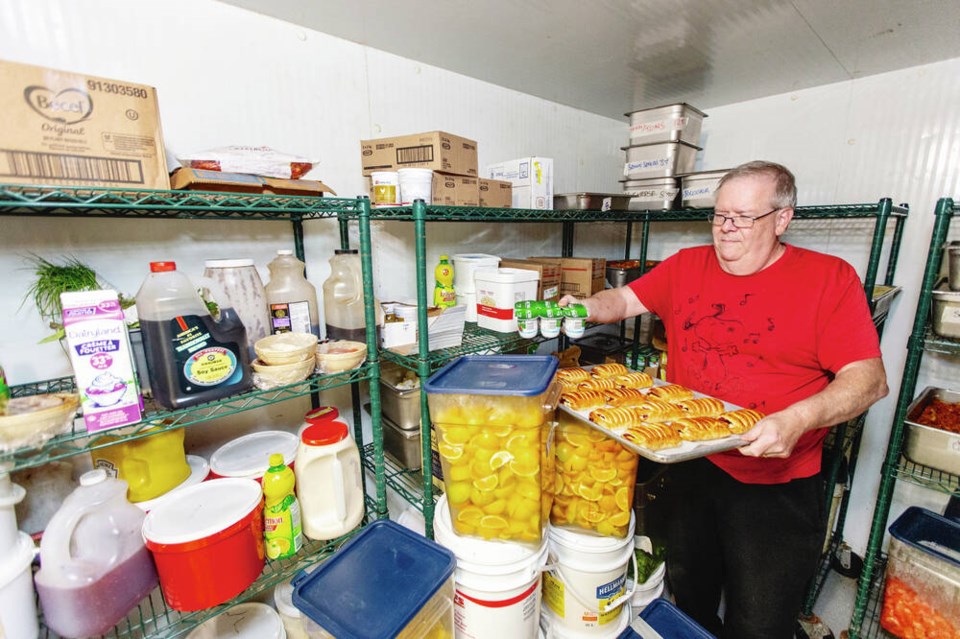Rising demand combined with soaring food costs have created a growing crisis for Our Place Society, which serves about 1,000 meals every day to those in need.
“We’re managing, but it’s really tight,” said Brian Cox, food services manager for Our Place Society housing sites. “We’re stretching our dollars as far as we can.”
The non-profit community centre and housing provider served 185,895 meals during the first six months of 2022, an increase of 35 per cent from the same period last year.
In May, Canada’s consumer inflation rate was up 7.7 per cent from the year prior — the largest yearly increase since 1983. Statistics Canada said the acceleration was mostly due to higher prices for gas and services, but grocery prices were up 9.7 per cent from 2021, and Canadians reported food as the area where they were feeling rising prices the most.
“The cost of food is going up … and at the same time the volume of how many [people] we’re serving is also increasing,” Cox said. “Maybe now instead of buying chicken drumsticks, I’m buying ground chicken or something where I can divide it and make it go further. So the portion sizes are just starting to be affected.”
The Goldstream Food Bank is feeling the pinch, too, said purchaser Susan Still. “We used to pay $27.14 for a case of 24 of baked brown beans, and we are now paying $66. The price of everything is just astronomical.”
Still said price isn’t the only issue — supply is also a problem. She doubles and sometimes triples her orders in hopes of getting even a portion of what she asks for.
“I’m four months in on some of these items and I’m seeing nothing,” she said. “Everything seems to be much more difficult to get and when it is here, it’s at three times the cost.”
Still said the Goldstream Food Bank, which is almost entirely volunteer-run, is still able to put nutritious hampers together, thanks to the generosity of the community. But more donations are needed, Still said, and because of the supply issues, food donations can go further for the West Shore non-profit.
“I would normally say as a purchaser, we make your money stretch two to three times more, but now I’m asking you to purchase at the store level and bring us what you can.”
Cox said Our Place Society is affected by supply-chain problems, too. He spends more time since the pandemic began trying to track down deals and order items online.
“Breakfast cereal was not available for a month, crackers were off for three weeks. There was a world shortage of corn starch, believe it or not.
“It’s little things you use, and sometimes you don’t realize until you order it and it doesn’t arrive.”
Cox said the non-profit can still stretch monetary donations further, so he encourages those donations over food items when possible. Donations can be made online at ourplacesociety.com.
The Consumer Price Index shows how much food costs are rising. It measures changes in consumer prices and is calculated by comparing the cost of a fixed basket of goods or services against the cost of the same basket in 2002, which at that time cost $100.
In 2012, B.C.’s annual average CPI for food was 127.3. By 2021, it was 153.1. The national average CPI for food in 2021 is 157.5.
“It’s not just one group of people suffering anymore,” said Tyson Elder, operations manager for the Saanich Peninsula Lions Food Bank. “Everyone is having a tough time, especially coming out of the pandemic.”
The Sidney-based food bank supports seven schools in the area with their breakfast and forgotten-lunch programs, supplying fresh fruit, vegetables, granola bars and more.
“We’re hearing more and more that these schools are helping over 100 kids each week,” Elder said. “A lot of parents aren’t taking lunches to work so their kids can have something at school.”
In 2021, there were about 131,001 visits to 126 B.C. food banks, according to data from Food Banks Canada. Across Canada, food bank visits increased by just over 20 per cent between 2019 and 2021, with 1.3. million food-bank visits in March 2021 alone.
“The hardest part is walking through that door to ask for help,” Elder said. “We try to be as generous and kind to everyone who walks through that door, just to make them feel more welcome and know that there is compassion out here.”
>>> To comment on this article, write a letter to the editor: [email protected]



